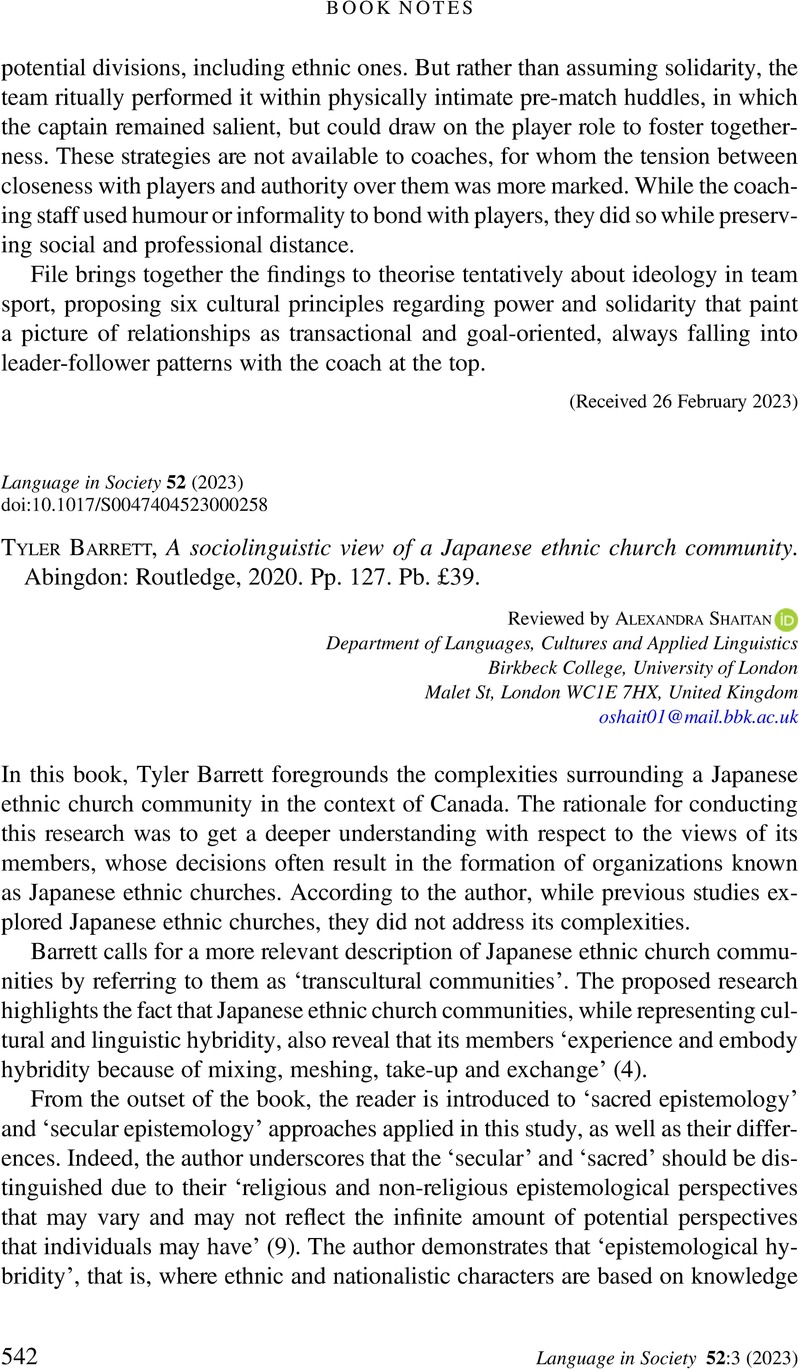No CrossRef data available.
Article contents
Tyler Barrett, A sociolinguistic view of a Japanese ethnic church community. Abingdon: Routledge, 2020. Pp. 127. Pb. £39.
Review products
Tyler Barrett, A sociolinguistic view of a Japanese ethnic church community. Abingdon: Routledge, 2020. Pp. 127. Pb. £39.
Published online by Cambridge University Press: 12 June 2023
Abstract
An abstract is not available for this content so a preview has been provided. Please use the Get access link above for information on how to access this content.

- Type
- Book Notes
- Information
- Copyright
- Copyright © The Author(s), 2023. Published by Cambridge University Press



